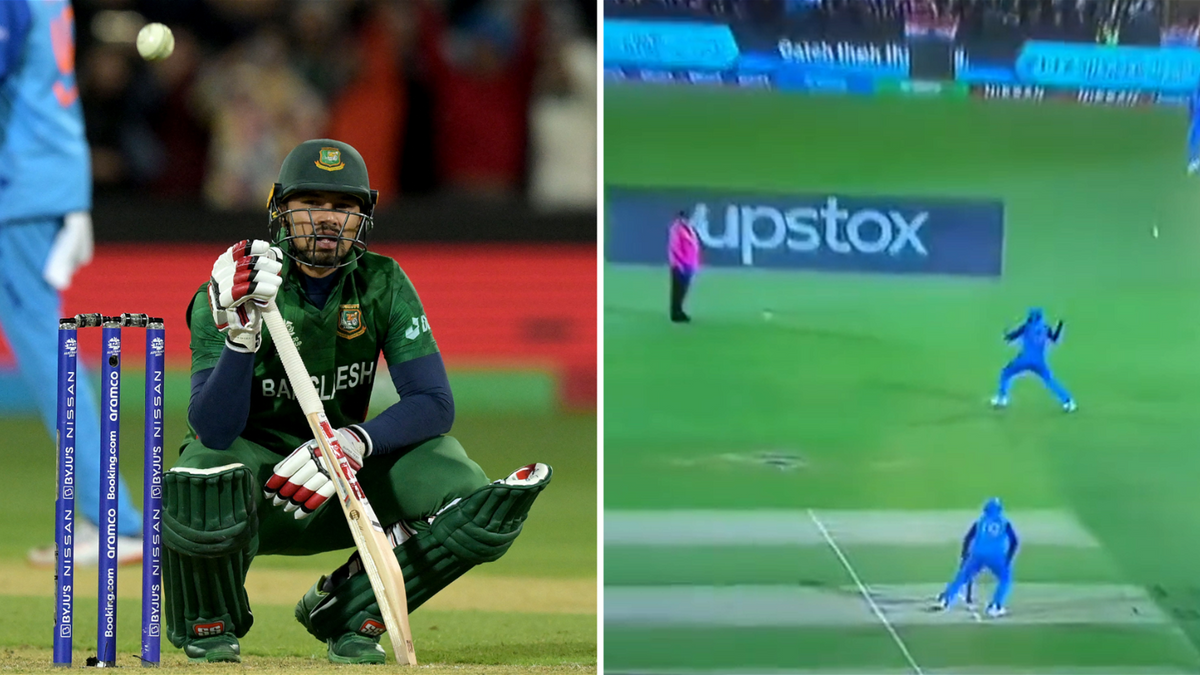
Bangladesh’s Nurul Hasan has claimed an incident of ‘fake fielding’ went unpunished during his side’s five-run DLS defeat to India.
The thrilling game went down to wire, with Hasan failing to hit a last-ball six that would have tied the scores. The match was flecked with controversy, with Litton Das, Bangladesh’ top scorer, run out after slipping twice in wet conditions following the rain delay.
Hasan pointed to another moment of frustration in the aftermath of the game. “You saw that we had to play in a wet outfield, but there was also a case of fake fielding which also didn’t go our way,” he told the press after the game.
The incident to which Hasan is referring appears to have come in the seventh over of the chase. Das played a stroke into the off-side, and as Arshdeep Singh in the deep threw into the keeper, Virat Kohli mimed a relay throw at the non-striker’s end, despite not having the ball. Had the umpires judged this as being ‘fake fielding’, India would have been hit with a five-run penalty, with the ball also being re-bowled. Bangladesh ended up five runs short of tying the game.
What does the ‘fake fielding’ law say?
The ‘fake fielding’ law was introduced in 2017, and attempts to stop fielders from deceiving or distracting opposition batters. “The reason for the introduction of this law was that fielders were deliberately pretending to have the ball as a means of fooling the batsmen, thereby preventing them from taking further runs,” Fraser Stewart, MCC’s Laws of Cricket manager, explained to ESPNcricinfo in 2017. “The batsmen would see a slide and a feigned throw and would decline, for example, a second run. By the time they realised the ball had not been thrown, it would then be too late to take the second run. This was felt to be unfair.”
The law itself, law 41.5 in the MCC’s Laws of Cricket, states: “It is unfair for any fielder wilfully to attempt, by word or action, to distract, deceive or obstruct either batter after the striker has received the ball. It is for either one of the umpires to decide whether any distraction, deception or obstruction is wilful or not.”
So whether Kohli’s mimed throw counts as ‘fake fielding’ is up to the interpretation of the match officials. Bangladesh were able to run two, and would not have been able to run a third. And while the law doesn’t make reference to an attempt to gain an advantage, Stewart explained that this can be taken into account, discussing an incident where Kumar Sangakkara pretended to have claimed the ball to force Ahmed Shehzad to dive for his crease.
“The Sangakkara example is less clear-cut,” Stewart said. “Technically, he is deliberately attempting to deceive the batsman, but I’m not sure what advantage he is gaining – not that the gaining of an advantage needs to be proved. It seems to be done more out of jest than out of an attempt to cause confusion and prevent a run being scored. Under the letter of the law, one could not argue with the penalty being imposed. Equally, however, an umpire might choose to handle it by having a quiet word and informing him of the new law. As with any law like this, it is always going to be for the umpires to decide what is ‘deliberate’ and what is ‘deception’.”
Bet365 will be Live Streaming all of the T20 World Cup matches direct to your iPhone, iPad or Android device, as well as desktop. This means that every T20 World Cup fixture will be available to bet365 customers wherever they are in the world.








